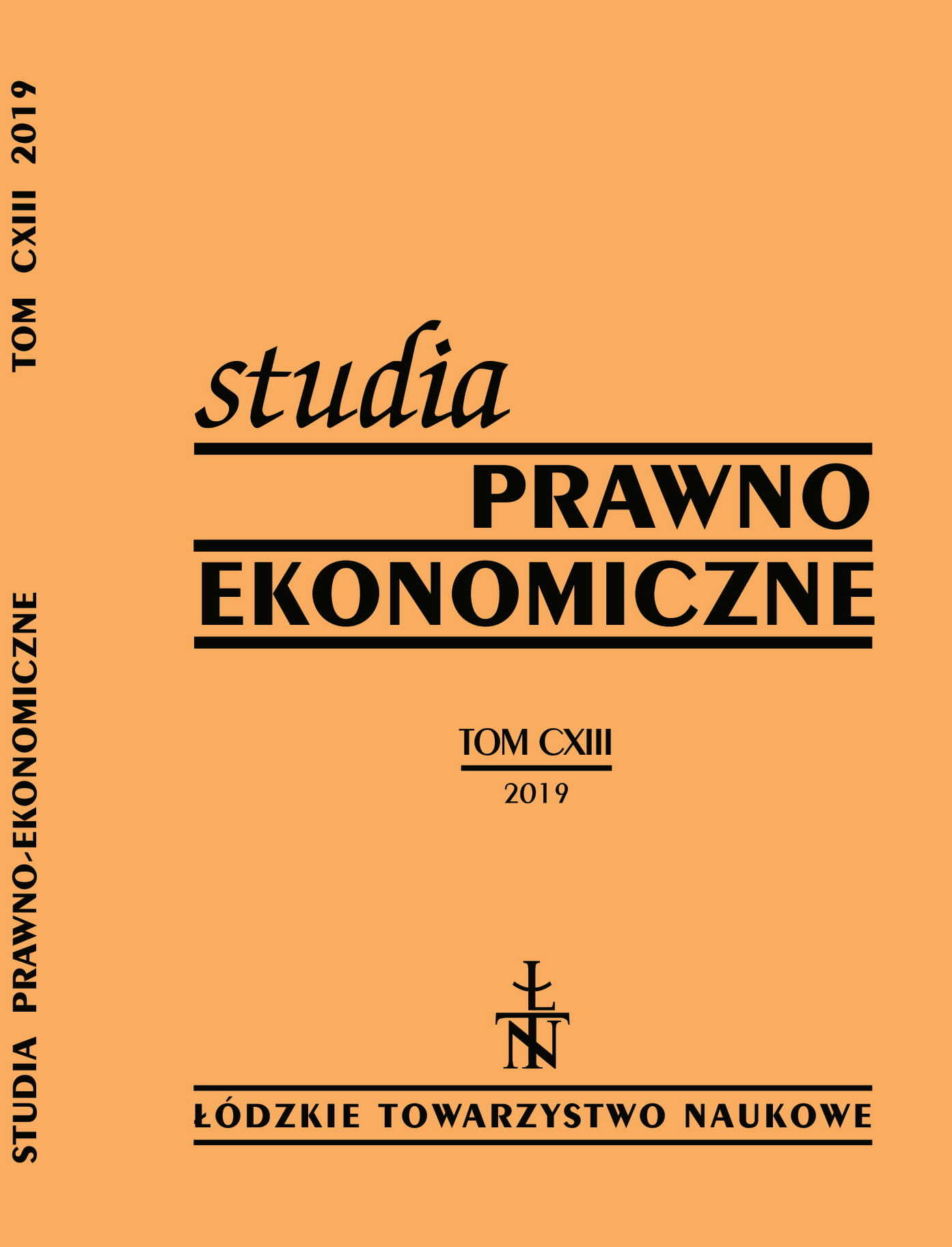Internal migrations in Germany and their determinants
DOI:
https://doi.org/10.26485/SPE/2019/113/13Keywords:
internal migrations, regional analyzes, spatial econometric modelsAbstract
Background: The subject of the study is the analysis of internal migration in Germany.
Research purpose: The paper aims to indicate the size and direction of migration flows between the Länder of Germany in the years 2005–2016 and to assess the degree of dependence between these migration flows and economic determinants.
Methods: In the analysis, we used descriptive methods of migration flows, differentiation analysis, wages, and unemployment rates in time and space. We also used spatial econometrics methods: the least squares method (LSM), generalized method of moments (GMM), logistic models, and fixed effects models.
Conclusions: The results of the research show that beneficiaries of the net migration flows were six German Länder, including four western Länder: Bayern, Baden-Württemberg, Hamburg, Schleswig-Holstein, and two eastern Länder: Berlin and Brandenburg. It was also proved that the geographical distance and travel time had the greatest impact on migration flows, followed by the possibility of finding a job.
Downloads
References
Jahre Deutsche Einheit, Statistisches Bundesamt, Wiesbaden 2015.
Bevölkerung und Erwerbstätigkeit. Bevölkerung mit Migrationshintergrund – Ergebnisse des Mikrozensus 2015, Statistisches Bundesamt 2017.
Bevölkerung und Erwerbstätigkeit. Bevölkerung mit Migrationshintergrund – Ergebnisse des Mikrozensus 2017. Fachserie 1 Reihe 2.2, Statistisches Bundesamt (Destatis) 2018.
Bevölkerung und Erwerbstätigkeit. Wanderungen, Fachserie 1 Reihe 1.2, Statistisches Bundesamt, Wiesbaden 2015.
Bryx Marek, Jadach-Sepioło Aleksandra, Rewitalizacja miast w Niemczech, Kraków 2009.
Demography report. Short Analytical Web Note 3/2015, European Union, Luxembourg 2015.
European Economic and Social Committee, Immigration: Integration and fundamental rights, 2012.
Florczak Waldemar, Wpływ starzejącego się społeczeństwa na długookresowy wzrost gospodarczy Polski do roku 2050, Gospodarka Narodowa 2017/5.
Fuchs Michaela, Weyh Antje, Rückwanderung von Beschäftigten nach Ostdeutschland: Räumliche Muster und soziodemographische Strukturen, Aktuelle Forschungsergebnisse, https:// www.researchgate.net/publication/319174158_Ruckwanderung_von_Beschaftigten_nach_ Ostdeutschland_RaumlicheMuster_und_soziodemographische_Strukturen; stan na 25.05.2019 r.
Fuchs Michaela, Weyh Antje, Rückwanderung nach Ostdeutschland. Räumliche Muster und Bedeutung für regionale Arbeitsmärkte, Zeitschrift für Wirtschaftsgeographie 2015/3 (59).
Grigg David, E.G. Ravenstein and the “laws of migration”, Journal of Historical Geography 1977/3/1, s. 41–54.
Kowalski Arkadiusz M., Marcinkowski Andrzej, Struktury klastrowe jako bieguny wzrostu gospodarki – przykład Bawarskiego Klastra Biotechnologicznego, Gospodarka Narodowa 2012/9.
Lang Thilo, Hämmerling Aline, Zurück nach Ostdeutschland: Bedingungen und Motivlagen der Remigration von ostdeutschen Abwanderern, Berichte, Geographie und Landeskunde 2013/87 (4).
Lee Everret S., Teoria migracji, Przegląd Zagranicznej Literatury Geograficznej 1972/3/4.
Nadler Robert, Kleinräumige und flächendeckende Rückwanderungsforschung anhand der Beschäftigtenhistorik des Instituts für Arbeitsmarktund Berufsforschung: Das Beispiel Ostdeutschland, Europa Regional, April 2018/24 (3–4).
Pastuszka Sławomir, Charakterystyka i znaczenie wsparcia finansowego dla rozwoju krajów związkowych wschodnich Niemiec, Rozwój Regionalny i Polityka Regionalna 2018/42.
Pastuszka Sławomir, Polityka rozwoju wschodnich Niemiec – cele, narzędzia, efekty, Optimum. Studia Ekonomiczne 2016/6 (84).
Pastuszka Sławomir, Regiony problemowe we Włoszech, w Niemczech i Polsce oraz uwarunkowania ich rozwoju, Wydawnictwo UJK, Kielce 2019.
Pindyck Robert S., Rubinfeld Daniel L., Econometric Models and Economic Forecast, Mc¬Graw-Hills, New York 1991.
Prskawetz Alexia, Will population ageing decrease productivity?, Vienna Yearbook of Popula¬tion Research 2005/3 (1).
Ragnitz Joachim, Solidarpakt II: Zweckentsprechende Mittelverwendung nicht in Sicht, Wirt¬schaft im Wandel 2005/9.
Ravenstein Ernst G., The laws of migration, Journal of the Royal Statistical Society 1885/52/2.
Sojka Elżbieta, Odległość geograficzna jako determinanta migracji – na przykładzie województwa śląskiego, Wiadomości Statystyczne 2017/12 (679).
Szczepaniak Daniela, Tokarski Tomasz, Ekonomiczne determinanty migracji wojewódzkich, Wiadomości Statystyczne 2018/2 (681).



